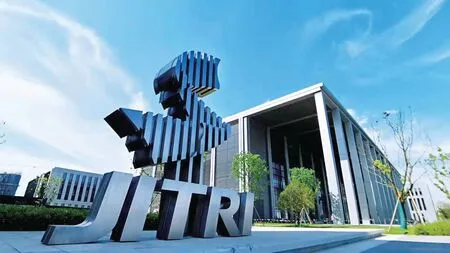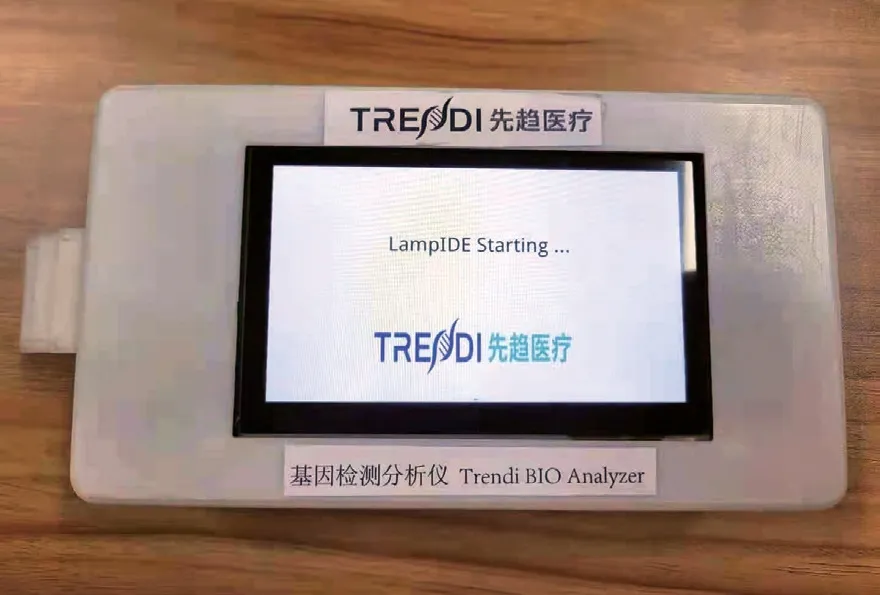江苏产研院:架两世界桥梁,迎产学研挑战
2022-03-21PaulBurrows英国美国张佳艺
文/ Paul Burrows(英国/美国) 译/ 张佳艺
从表面上看,大学和产业似乎自然而然是结合对象:大学创造技术,产业运用技术来制造产品,两者应是终身伴侣。大学和产业之间确实有着许多成功的合作伙伴关系。然而,就像一些婚姻一样,双方平稳相处是很有挑战性的。
跨越“死亡谷”的桥梁
大学的主要“产品”是知识。这通常被细分为可衡量的绩效指标,如毕业生情况、论文发表或专利授予情况,这些都指向知识的生成。反观产业,其主要“产品”是所有者或股东的利润。产业对社会有诸多裨益,理应承担社会责任,但如果没有利润,其长期生存也就成了问题。大学和产业这两者的不同目标导致了大相径庭的研究方法。
抛开一些例外不谈,大学研究往往处于相对早期的阶段,由拨款资助;产业研究往往有更多具体要求,且自投资金,承担着不在他处使用这些资金的“机会成本”的额外风险。尽管产业拥护创新以提高竞争力的理念,但企业可能会发现自身陷入“创新者困境”,所以通常较为保守。这是哈佛商学院已故的克莱顿·克里斯滕森(Clayton Christensen)在20世纪90年代推广的一个概念,即当企业专注于为不断缩小的客户群进行增量改进时,一些技术进步扰乱了他们的市场,他们会成为不可预见的技术进步的牺牲品。
究其原因,在于应对风险的方式不同。所有真正的创新都不能规避风险,但从创新到市场,风险呈现出不同的特征。于大学而言,政府往往是投资方,大学教授处理技术风险时无须顾虑太多,他们需要考虑的是“能起作用吗”,很少考虑经济损失。而产业面对的是商业风险,主导问题是“会有人买吗”。这两者之间就是著名的资金死亡谷:那些对于院校来说过于专注而不可公开的、对于产业来说风险过高的创新直指死亡。

江苏省产业技术研究院
江苏省产业技术研究院(以下简称“江苏产研院”)成立于2013年。作为跨越“死亡谷”的桥梁,致力于促进江苏产业从过去的劳动力驱动和资本密集型经济转变为全新的创新驱动型经济。为了履行这一使命,该院搭建了两个平台。
为了提升必要的研究能力,江苏产研院在全省范围内建立了第一个主要平台——研究机构网络,为学术界提供专注于产业相关研究的环境,使其能与商业化专家密切合作。事实上,江苏产研院的研究所每年都要接受评估,并根据相应绩效指标获得资金。这些指标很大程度上取决于为当地产业服务的程度。自2016年以来,江苏产研院新设的研究所由技术团队拥有多数股权。江苏产研院现有60多个研究所,总人数超过11000人,每年新生100多个衍生公司。
第二个主要平台是江苏产研院的联合企业创新中心(JICs),与江苏领先企业有着合作伙伴关系的这些企业及其各自的产业链负责验证行业需求和市场机会,并有望为解决这些需求提供资金。140多个联合企业已经开始运行,并被列入www.jitri.cn的在线年度报告中。
联合企业创新中心的需求首先由江苏产研院的研究所来满足。如果自身找不到所需的技术,则由第三个主要平台——国内外大学创新合作伙伴来满足。55个中国大学合作伙伴和100多个海外联合项目是强有力的资源,在此非正式地称之为联合企业创新中心全球创新网络。联合企业创新中心将全球创新资源链接到江苏省,为产业与学界搭建了桥梁。这也有助于将风险降至最低。
专业知识降低创新交易中的风险
优秀的投资者会研究风险回报曲线,知道承担更大的风险可以获得更大的回报,也可能遭受更大的损失。每个企业或投资者都有由损失容忍度设定的风险容忍度上限,这严格限制了他们探索更高风险创新的能力,也相应地限制了他们的潜在收益。通过验证市场潜力、产业伙伴与大学共同资助研究,江苏产研院降低了投资风险,使行业能够在风险回报曲线上比在正常舒适区内走得更远。通过抵消损失风险,创新回报的可能性也相应增加。与此同时,收集和验证产业需求使大学合作伙伴相信其技术具有商业价值。通过在大学和江苏产研院之间的谅解备忘录框架内行事,教授个人遇到监管或政策问题的风险也会降低。实际上,江苏产研院的专业知识降低了创新交易中双方的风险。
英国伯明翰大学是个成功的例子。该校与江苏产研院机器人和智能设备研究所合作,共同开发了微粒子机械强度测量仪器。这是中国唯一自主研发的仪器。这项研究对中国的微尺度材料的研究、相关产品的开发和实际应用具有重要意义。2019年,项目团队开发了一种基于开放代码库的商业仪器以进行微粒机械强度测量,并建立了小规模的测试市场和客户群。
当然,颠覆性的大学创新成果可以以创业公司的身份直接进入市场,但这需要外部投资。同样,大学技术相对较长的孵化期可能会使其在任何地方都面临挑战。不过在中国,吸引时间跨度逾两年的风险投资似乎特别困难。这可能适用于推出最新的社交媒体应用程序,但任何涉及新材料或制造的东西都需要更长的跑道才能成功起飞。
相同情况下,我最成功的大学研究是普林斯顿大学于1994年分拆出的环球显示器公司。这家开发有机发光材料的公司于1996年在纳斯达克小盘股市场上市,获得了一项专利,并在随后的十年中多次出售更多股票以弥补亏损。事实上,直到2011年OLED显示屏成为手机界的主流之前,环球显示器公司每年都在亏损。2020年,环球显示器公司以4.28亿美元的营收实现了1.33亿美元的净收入,目前市值为70亿美元。其实从大学研究到商业盈利,这种时滞并不罕见。
公开市场融资在中国也是大有可能的,但沪深证券交易所主板要求申请人在前三年有净利润,总净现金流超过5000万元人民币,这就排除了处于亏损状态的早期技术公司。为了在科学技术的关键领域产生更多的本地首次公开募股,并鼓励新兴技术公司在国内而非海外上市,上海科创板和深圳创业板等较小板块已经推出。然而,大多数类别要求估值超过10亿元人民币,年收入超过1亿元人民币。这确实保护了公众免受过度风险的投资选择,但也将技术创新者与最具影响力的工作的资金支持隔离开来。
足够接近商业化的项目可以通过江苏产研院的项目经理计划直接落地。只有在江苏产研院的专家网络对商业计划和市场潜力进行验证之后,这些项目才会被接受。该计划允许项目团队来到江苏并完善他们的商业计划,其目标是在约一年内落地一个新的商业实体。每年约有30—40个项目经理团队被选中,占20%,成为江苏创新生态系统的有力补充,其他80%无法落地。
这是早期风险管理的一个典型例子:经常失败,快速而廉价。最重要的是,成功落地涉及与当地政府或产业园区的投资谈判,从而支付新公司的资本设备和运营费用。这些投资者往往是相当规避风险的。因此,江苏产研院对公司和研究所的核心作用在于风险管理:地方政府投资允许采用轻资产商业模式,从而降低创新者(需共同投资)的风险;江苏产研院的团队网络、商业计划以及最为关键的市场潜力提供的验证,降低了地方政府投资者的风险。
江苏产研院的市场评估对于降低风险的重要作用是如何强调都不为过的。在大学环境中,人们很容易爱上一项发明的技术,但人们却并不购买技术。如果你试图出售它,几乎一定会失败。CB Insights在线发表的一项调查研究了美国100多家失败的初创公司以发现它们失败的原因。在前20个答案中,“技术”一词出现了0次。大约35%的参与者最普遍的回答是,他们没有发现市场需求。人们买的不是技术,而是问题的解决方案。
江苏产研院另一个成功的合作伙伴是来自澳大利亚的莫纳什大学。该校在2015年首次签署了谅解备忘录,迄今已启动了十多个合作项目。2020年9月由江苏产研院的关国良(Patrick Kwan)教授小组和常州科教城投资发展有限公司联合成立的常州先趋医疗有限公司,正在为临床快速体外诊断系统开发产品,并且有一家全资子公司已经在澳大利亚墨尔本运营。该公司支付着莫纳什大学的联合研究费用,其主要业务包括四大平台:试剂开发、芯片试纸开发、检测仪器开发,以及癫痫病的人工智能诊断平台。
将产业技术问题定义并包装为教育产品
江苏产研院现在正在开发一个新概念——将产业技术问题定义并开发为教育产品,即利用江苏产研院的创新生态系统,通过开发基于项目的跨学科学习,实施双导师系统。江苏产研院已经通过与大学合作,联合培养了1000多名毕业生。产业、研发与教育的结合将培养出面向未来、面向需求和面向实践的产业创新人才,最终形成一所产业创新大学——江苏省产业技术研究院大学。
降低创新风险的海外例子包括小企业创新研究,即SBIR计划。美国联邦政府规定其所有资助机构拨出一小部分资金支持小公司在优先领域进行研究,而这通常是与大学合作。第一阶段是短时间内的小额资助,用以给予概念证明,最重要的是它有一个精、简、易的提案模板和审查流程。少数能够进入第二阶段的项目在政府希望推广的既定领域获得大量非稀释性资金。根据报告,这些成功的项目创造了估为22:1的经济回报。
政府不能创新,但可以部署资源,以降低学术界和投资者的创新风险,增加从大学到产业的思想交流,以及从产业到大学的挑战,从而培育创新驱动型经济。目前,江苏产研院正扩展模式,拟在长三角国家技术创新中心创建国家创新中心,其诸多想法将在更大范围内产生更深远的影响,这值得我们期待。

多通道便携式基因检测分析仪,可同时测试多片多种类型基因试纸,可实现基因/核酸“现场”测试,结果快速而精准
On the surface, industry and universities would seem natural candidates for marriage. Universities generate technology; industry consumes it to manufacture goods. They should be life partners. Indeed,there are many successful partnerships between universities and industry. Like some marriages, however, making it work smoothly can be challenging. This article offers some thoughts on those challenges and some illustrations of how the Jiangsu Industrial Technology Research Institute (JITRI) has worked to increase the flow of innovation into China’s manufacturing industry.
A bridge over the valley of funding death
The main product of a university is knowledge. This is often segmented into measurable performance indicators such as students graduated, papers published, or patents granted but the generation of knowledge is a common theme. The main product of industry, on the other hand, is profit for owners or shareholders. Industry has many positive benefits to society and should be socially responsible but in the absence of profit it will not survive long. These different goals lead to a fundamentally different approach to research.
While there are important exceptions, research in universities tends to be relatively early stage and funded by grants. Industry, on the other hand, tends to have much more specific requirements and invests its own capital with the added risk of an “opportunity cost” of not using that capital elsewhere. While industry embraces the idea of innovation for competitiveness, companies tend to be conservative and can find themselves in the “Innovator’s Dilemma,” a concept popularized in the 1990s by the late Clayton Christensen of Harvard Business School, falling prey to unforeseen technological advances that disrupt their market while they focus on incremental improvements for a shrinking customer base.
The problem is different approaches to risk. All true innovation involves risk but, from invention to market, risk takes on different characteristics. University professors are comfortable dealing with technical risk, characterized by the question “will it work?” and generally funded by government with little consideration for financial loss. Industry deals with business risk, characterized by the question “will anyone buy it?” Between the two lies the famous valley offunding death where innovation that is too focused (and unpublishable) for university research but too risky for industry can die.
The Jiangsu Industrial Technology Research Institute (JITRI) was founded in 2013 to serve as a bridge over this valley, with the goal of transforming Jiangsu industry from its labor-driven and capitalintensive past to a new, innovation-driven economy. To fulfill this mission, JITRI built two platforms.
To build research capacity where needed, JITRI established a network of research institutes across the Province to provide academics with an environment in which they could focus on industry-relevant research working closely with commercialization experts. Indeed,JITRI’s Institutes are evaluated annually and funded in accordance with performance metrics that are strongly weighted to how well they have served local industry. Since 2016, new JITRI Institutes are majority-owned by the technical team providing the leadership.JITRI has now established over 60 Institutes, totaling over 11,000 staff and yielding over 100 spin-off companies each year.
The second major platform is JITRI’s Joint Enterprise Innovation Centers, or JICs. These are partnerships with leading Jiangsu enterprises that, together with their respective industry chains, are tasked with validating industry needs and market opportunities and, hopefully,funding solutions to those needs. Over 140 JICs are already operating and are listed in the Annual Reports that can be found online at www.jitri.cn.
The overarching idea, then, is that needs from JITRI’s JICs are fulfilled by JITRI’s Institutes and, if the required technology cannot be found there, by the third major platform most relevant to this article:our university innovation partners both domestic and overseas. Our 55-plus Chinese university partners and over 100 joint overseas projects is a powerful resource in what I informally call the JITRI Global Innovation Network (GIN). JITRI bridges the global innovation re-source to Jiangsu Province, and industry to academia. It also serves to minimize risk.
Expertise reduces the risk in an innovation transaction
Good investors study the risk-reward curve and know that taking greater risk allows one to earn greater rewards… or suffer greater loss. Each company or investor has a ceiling of risk tolerance set by that tolerance of loss, which strictly limits their ability to explore higher risk innovation and correspondingly limits their potential gain. By validating the market potential and co-funding research between its industry partners and universities, JITRI reduces the risk of investment and enables industry to go further up the risk-reward curve than would be in its normal comfort zone. By offsetting the risk of loss, the possibility of innovation reward is correspondingly increased. At the same time, the collection and validation of industry needs gives the university partner confidence that its technology has commercial value and by acting within a framework MOU between their university and JITRI, the risk of an individual professor encountering regulatory or policy problems is also decreased. In effect,JITRI’s expertise reduces the risk for both parties in an innovation transaction.
One example of success is the University of Birmingham, UK,which worked with the JITRI Robotics and Intelligent Equipment Institute to jointly develop a mechanical strength measurement instrument for microparticles. This research is important for research into micro-scale materials, related product development,and applications in China. In 2019, the project team developed a commercial instrument for microparticle mechanical strength measurement with operating software based on open code libraries. A small-scale test market and customer base were also established for the instrument, which is the only one developed from independent research in China.
Of course, a disruptive university innovation may go directly to the market in the form of a startup company but this requires outside investment. Again, the relatively long incubation period of university technology can make this challenging anywhere, but it seems particularly difficult to attract venture funding with more than a two year time horizon in China. That might work for launching the latest social media app, but anything involving new materials or manufacturing needs a longer runway to successfully take off.
For context, my most successful university research led to the spinout, from Princeton University, of Universal Display Corporation in 1994. This company, developing organic light emitting materials,went public on the Nasdaq Small Cap market in 1996 with a single issued patent, and sold more stock several times over the subsequent decade to cover its losses. Indeed, UDC consistently lost money each year until 2011, when OLED displays finally went main-stream incellphones. In 2020, UDC made $133 million of net income on $428 million of revenues and currently has a market capitalization of $7 billion (I left long ago). The point is that such a time-lag from university research to commercial profitability is not unusual.
Funding in the public markets is also possible in China, too, but the Main Board of the Shanghai or Shenzhen Stock Exchange requires an applicant to have net profits for the previous three years and a total net cash flow of more than RMB 50 million, ruling out loss-making early technology companies. Smaller boards have been launched to generate more local IPOs in key sectors of science and technology and to encourage emerging technology companies to list in China rather than overseas, such as Kechuang in Shanghai and ChiNext in Shenzhen. Most categories, however, require a valuation in excess of RMB 1 billion and revenues over 100 million per year. This indeed protects the public from overly risky investment options but also isolates technology innovators from the sort of funding that enabled my most impactful work.
Projects close enough to commercialization can be landed directly through JITRI’s Project Manager Program. These projects are accepted only after validation of the business plan and market potential by JITRI’s specialist network. The Program allows a project team to come to Jiangsu and refine their business plan with the goal of landing a new commercial entity within about a year. About 30 - 40 project manager teams are accepted each year and up to 80% ultimately fail to land! The other 20%, however, become strong additions to the Jiangsu Innovation Ecosystem.
This is a classic example of early stage venture risk management: fail often, fast and cheap. Most importantly, successful landing involves the negotiation of investment from a local government or industry park to cover capital equipment and operating expenses for the new company. These investors are often rather risk-averse. Again, therefore, JITRI’s core role for both companies and Institutes is in risk management: the local government investment allows for an assetlight business model that reduces the risk for the innovator (who is required to co-invest) whereas the validation by JITRI’s network of the team, the business plan and, most importantly, the market potential reduces the risk for local government investors.
The importance of JITRI’s market assessment to reduce risk is hard to overstate. In a university environment, it is easy to fall in love with a technology that you invented. People don’t buy technology, however, and if you try to sell it you will almost certainly fail. A survey published by CB Insights online examined over 100 failed startup companies in the USA to discover why they failed. In the top 20 answers, the word “technology” appears zero times. The most common response, from around 35% of the participants, is that they found no market need. People don’t buy technology, they buy solutions to problems.
Another successful JITRI partner is Monash University from Australia, which first signed an MOU in 2015. More than ten joint projects have been launched to date. Changzhou Trendi Medical Technology Co., Ltd. is one recent example, jointly established by the group of Professor Patrick Kwan, JITRI, and Changzhou Science and Education Town Investment Development Co., Ltd. in September 2020. The team is developing products for a clinical rapid in vitro diagnostic system. Headquarters are in Changzhou science and Education Town, but a wholly-owned subsidiary is already operating in Melbourne, Australia, and the company is paying for joint research back at Monash. Its main business includes four platforms: reagent development, chip test paper development, detection instrument development, and artificial intelligence diagnosis platforms for epilepsy.
Industrial technology problems are defined and packaged as educational products
JITRI is now developing a new concept where industrial technology problems are defined and packaged as educational products. Leveraging JITRI’s innovation ecosystem, a system of dual supervisors is being implemented by developing project-based, interdisciplinary learning. JITRI has already jointly trained over a thousand new JITRI graduates by working in partnership with their universities. The integration of industry and R&D with education will cultivate futureoriented, needs-oriented and practice-oriented industrial innovation talent ultimately leading to an industrial innovation university-JITRI University.
Overseas examples of innovation risk-reduction include the Small Business Innovation Research, or SBIR Program, where the U.S.Federal government mandates all its funding agencies to set aside a small percentage of their support for small companies to do research in priority areas, usually in collaboration with a university. Phase 1 is small funding for a short time to give proof of concept and, most importantly, has a short, simple, and easy proposal template and review process. The few projects that make it to Phase 2 receive significant and non-dilutive funding in defined areas that the government wishes to promote. According to one report, the successes have created an estimated economic return of 22:1. SBIR is the best-kept secret about how America subsidizes its innovation ecosystem…and it’s no secret at all because all the information, including reports about its impact, is freely available on the internet. We should also learn from this success.
Universities and industry together create innovation. Government cannot create innovation. It can, however, deploy resources to reduce the risk of innovation for both academics and investors, increasing the flow of ideas from university to industry and challenges from industry to university to nurture an innovation-driven economy. As JITRI now expands its model to create a National Innovation Center in the Yangtze Delta Region, I look forward to seeing the impact of these ideas at larger scales.
